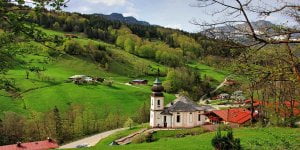1. History of Thomas Cook
All thanks to the dedication of a single man, Thomas Cook today is the world’s best known name; he is an inspiration for all the upcoming entrepreneurs. Once Cook was waking walking along the road to Leicester, a thought suddenly flashed his mind. He had a thought of using the great powers of the locomotives and the railways to expand and spread his social reform. At the meeting with Britons’ Thomas kept forward that a train should be used to transfer the temperance supporters of Leicester for the meeting in Loughborough which was after four weeks.
The proposal was accepted with a positive approval and that very day the idea was forwarded to the secretary of the Midland Railway Company. The train was arranged for the passengers and on 5th July 1841 about 500 passengers were transferred in open carriages for a distance of 12 miles and back for a shilling. The day was a great success as he encouraged his first excursion and his social idea was being appreciated.
In 1841 Thomas Cook started his own travel company, with a successfully managed excursion at a shilling from Leicester to Loughborough on July 5th. These were the stepping stones through which Thomas Cook established a whole new company which was completely devoted to help Britons see the world.
2. Early Tours by Thomas Cook
For the next three summers, Cook arranged the trips for the local temperance societies and the Sunday school between Leicester, Nottingham, Derby and Birmingham. During this time thousands of people had their first experience with the rail travel and also this was the time when Thomas had successfully laid down the foundation stone for his future business of travel.
According to him this period was of ‘enthusiastic philanthropy’ as beyond the printing of posters and handbills he had o financial interest in any of the excursions. In the summer on 1845, Thomas organized his first commercial trip to Liverpool; this can be termed as the commencement of his commercial venture. This was a huge project and was far more than ambitious than any of his previous projects and prepared himself with every possible thing and situation. The rates of the tickets were affordable which 15 shillings were for first class passengers and 10 shillings for second class passengers. He also did a thorough investigation of the tour and published a handbook of the journey to be distributed to the travelers. This 60 page booklet became the modern holiday brochure.
3. The Great Exhibition by Cook
After travelling Wales, Scotland and Ireland till the end of 1850; Thomas Cook started undertaking foreign trips to Europe, United States and the Holy Land. Various thought had to be put on hold for some time, but when Sir Joseph Paxton, architect of Crystal Palace, requested Thomas Cook to bring some workers from Yorkshire and the Midlands to London for the great exhibition in 1851; Thomas put in his all effort and did this work with full enthusiasm, hardly spending any night at home in the months June and October.
During then he also produced a newspaper naming, Cook’s Exhibition Herald and Excursion Advertiser, with the purpose of promoting his tours. By the end of the exhibition he managed to take about 150,000 people to London and his final train to the exhibition contained 3,000 children from Leicester, Nottingham and Derby.
4. Across the Channel
Thomas was doing really well and continued to expand his business in Britain but his focus was to do the same in Europe also. Finally, in 1855 an international exhibition was going to take place in Paris and Thomas left no chance to seize this opportunity by contacting the companies to let him manage the traffic and travel of the people in that particular time.
However, they refused to work with him and he was allowed to use only one route between Harwich and Antwerp. This route opened up big opportunity for Thomas. The tour include a grand circular route that included Brussels, Cologne, The Rhine, Heidelberg, Baden- Baden, Strasbourg and Paris, returning to London through Le Havre. Through this route in 1855, Thomas successfully escorted his first tour to Europe.
5. Switzerland and Italy
In 1863, Thomas visited Switzerland for the first time. This trip was not only concerned with gathering information, a group of 60 ladies and gentlemen accompanied Thomas in this tour till Geneva. Among these tourists was a young lady who used to maintain all the record of the events every day. Her original diaries can also be studied today in the Thomas Cook’s Archive. By 1863, Thomas had started to organize further trips to the continents. Till the end of the season he managed to help travel 2000 tourists to Paris out of which around 500 continued to Switzerland.
With the help and co-operation of the Paris, Lyons and Mediterranean railways Cook started issuing circular tickets between Paris and Alps both in English and French. Cook established his first circular tour to Switzerland which was a great success and was the time when Cook had made up his mind to expand his business across the Alps. In 1864, first Italian tour took place in the summers, when Thomas Cook escorted two large groups; one to Florence and center parts of Italy and the others to Rome and Naples.
6. Hotel Coupons and Circular Notes
The travelers who travelled to Switzerland were from the growing middle class and expected a better accommodation facility from Cook than the earlier working class group had. Therefore, his next task was to negotiate with the innkeepers and hotels to provide their services at good prices. He had good relations with the hoteliers who were pleased to work with him, which helped him to develop two crucial travel systems; one was the hotel coupons, which were launched in 1868, which could be used by the travels to pay the accommodation and meals bills instead of the money’ the other was his circular note which was first issued in 1874 and forerunner of the traveler’s cheque that helped tourists to get local currency in exchange of the paper issued by the Tomas Cook.
7. Beyond Europe
On his growing success in Europe, Thomas made an explanatory trip to the North America in 1865 and set a system of tours which covered 4000 miles of railways. After four years, in 1869, two steamers were hired by him and his first party up was conducted in Nile. In September, 1872 Thomas Cook at the age of 63 departed from Leicester on a world tour that keep him away from home for eight months, that proved to be the climax of his career.
It had always been his dream to travel Egypt via China but such a tour was possible only at the end of 1869 when the Suez Canal was opened and the rail network linking the east and west coasts of America was started. Thomas along with his small party crossed the Atlantic by the steamship and headed their way towards the Unites States from the New York to San Francisco by the rail. They travelled to Japan by the Pacific steamers, and crossed the inland sea to China, and thereafter visited to the Singapore, Ceylon and India.
They left Bombay, crossed the Indian Ocean and the Red Sea to Cairo, from where most of his part travelled back to London. But Thomas himself went on an extended tour to Egypt, Palestine and finally returned home via Turkey, Greece, Italy and France after an absence of 222days. This tour had become an annual event but many independent tickets were issued to the independent travelers but some of them travelled via Australia and New Zealand rather than china and Japan.
8. John Mason Cook
Thomas’s son, John Mason Cook had successfully established a new head office for their firm at Ludgate Circus while Thomas himself was travelling around the world. In 1878 their partnership ended because of an argument between them over a certain aspect of the project. The son was a better business man than his father and he set out on expanding the business internationally. The era where there were hardly any means of communication, no telephones, telegrams at its infancy age, expansion was not so easy. So, John created the editions of The Excursionist, the newspaper started by his father, overseas, in order to make aware the customers in places such as France, Germany, India, Australia, America, and the Far East about the services he will be offering.
In May 1902 this newspaper popularly came to know as The Traveler’s Gazette and continued to publish till 1939. He also kept a check on the working of the offices which were placed abroad and continuous guidance to them was given by John. Like any other successful businessman John also started to grab the opportunities well in time and made the best use of it, with a great memory of small detail of his business.
9. The Gordon Relief Expedition
In 1884 John Mason Cook was asked to organize a relief expedition by the British government up the Nile to rescue the General Gordon from Khartoum. There were around 18000 troops, 40,000tons of supply, 40,000 tons of coal and 800 whaleboats for which the arrangements were to be made. For transferring the coal from Boulac and Assiout via Alexandria, 28 large steamers and 6000 railways trucks were needed.
7000 railway trucks were needed for the military stores, while on the Nile 27 steamers and 650 sailing boats were required to carry troops and supplies. John and his Egyptian managers were wholly responsible for this operations and they relied upon the labor of 5000 local men to complete their side of the contract in November 1884.
10. Frank, Ernest and Bert
During the 1890’s both Thomas and John died and their business was inherited by the three sons’ of John; Frank, Ernest and Bert. The first quarter of the twentieth century, the period saw an introduction to the winter sport holidays, tours by motor cars and commercial air travel. The Thomas Cook and Sons dominated the travel scene and in 1942 the company was incorporated as Thomas Cook & Sons Ltd., the headquarters were moved from Ludgate Circus to Berkeley Street, an area which was now the center of London society.
11. From Wagons-Lits to British Railways
After the World War 2, Wagons-Lits headquarter in Paris was seized by the occupying forces and Cook’s British assets were acquired by the British government. To save the company from acute financial crisis a deal was signed and the organization was sold to the four mainline British companies. The Thomas Cook & Sons settles its affair and retained its 25% shares overseas immediately after the Second World War. In 1948 the company became state-owned as part of the nationalized British Railways.
12. The Fifties and Sixties
The Thomas Cook & Sons had a huge benefit from the post was holiday boom, where one million Britons travelled abroad by 1950. There were new firms that were coming up and challenged the company with the low prices and competitive services, but the Thomas Cook & Sons remained the most successful and largest amongst the all.
13. Into the 21st Century
- Thomas Cook sold its Global and Financial service division to Travelex on 27th March 2001. Three days later C&N Touristic AG, one of Germany’s largest travel groups, became the sole owner of Thomas Cook which led to the beginning of a new chapter in the company’s history. Within few months the company changed its name to Thomas Cook AG and brought up a new logo.
- Thomas Cook introduced its new three tier mass market brand strategy in the UK; in summer in March 2003 range of brochures and newly branded Thomas Cook Airlines was officially launched.
- Thomas Cook AG and MyTravel plc merged on 19th June 2011 and formed Thomas Cook Group plc.
- In October 2011, Thomas Cook amalgamated its UK high street travel and forex business with Co-operative Group and Midlands Co-operative society to create UK’s largest retail travel network over 1200 shops.
- The Thomas Cook unveiled its new unified ‘Sunny Heart’ brand to the world on 1st October 2013.




